Whether you’re new or a seasoned sender, the process of buying a climbing rope is surprisingly confusing. Multiple styles, various widths and lengths, and other features make it difficult to know where to even start. While they’re versatile, knowing what you plan to do with your rope and what you’re looking for narrow down the choices and help tailor your purchase.
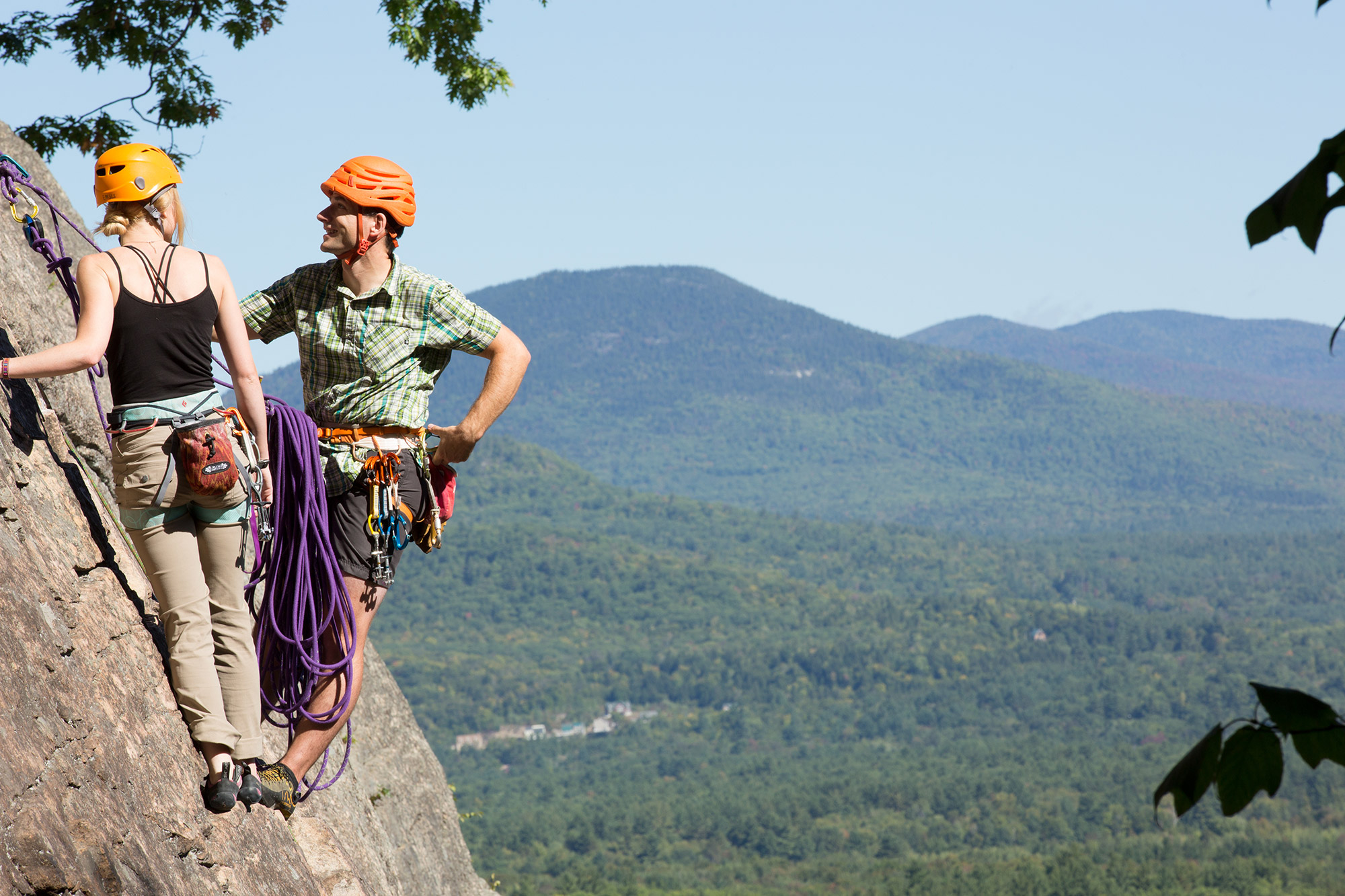
Dynamic or Static?
Climbing uses two kinds of ropes: dynamic and static. The former is used for belaying the climber (i.e., holding a climber who falls), while static ropes are designed for anchors and hauling. To “hold a fall,” these ropes stretch when weighted. Elongation then dissipates the fall’s energy and reduces the force placed on the climber and their gear. This process dramatically reduces the potential for injury or catastrophic failure of anchors and gear. Unlike dynamic ropes, however, static options stretch very little, making them ideal for building anchors but dangerous to climb on.
Elongation
The UIAA’s two measurements—dynamic and static elongation—indicate how much a rope will stretch. Dynamic elongation is how much a rope stretches during its first UIAA fall. More elongation means a longer fall, but also less force exerted on gear and the climber. The maximum amount of dynamic elongation allowed by the UIAA is 40 percent.
Static elongation measures how much the rope stretches with an 80kg weight hanging from it. The maximum amount of stretch allowed for single and twin ropes is 10 percent, while half ropes can stretch 12 percent.
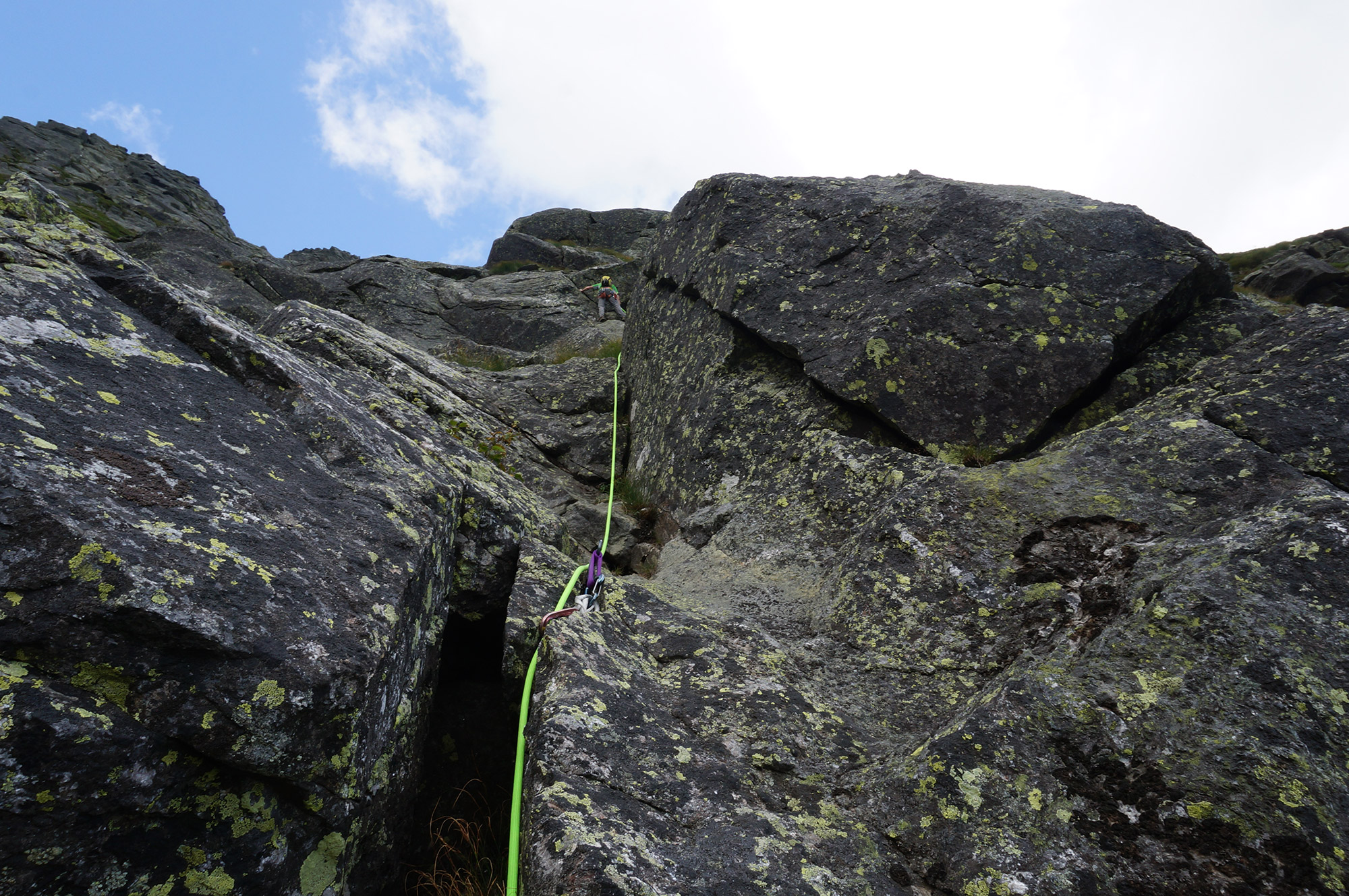
Single, Double, or Half?
Single
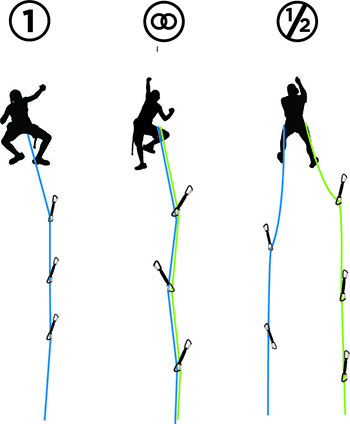 The most common type, single ropes are easily identified by the “1” marked in a circle on their ends. That simply means, when you’re climbing, you only need that one rope.
The most common type, single ropes are easily identified by the “1” marked in a circle on their ends. That simply means, when you’re climbing, you only need that one rope.
Thanks to their incredible versatility, they are the logical choice for almost every application. Indeed, they are used in all manners of climbing—top rope, sport, trad, multi-pitch, ice, and mountaineering. First-time rope buyers, take note!
Single ropes, however, are not perfect for every application. So, if you’re planning on doing long multi-pitch climbs like Lost in the Sun (which has seven 60-meter rappels) or just really enjoy pitches that wander, a two-rope system might be a more suitable choice.
Twin
With a circled infinity symbol (∞) on their ends, twin ropes are the simplest of the two-rope systems to use. Designed to be used as a pair and clipped simultaneously for protection, they offer multi-pitch rock and ice climbers two main advantages. First, they add redundancy to the system, as the leader is attached to two (as opposed to one) ropes. Second, in contrast to single ropes, where a climber can only rappel half the rope’s length, the two ropes allow climbers to make full-length rappels. Because you climb with two, they are typically narrower in diameter than a single rope.
Twin ropes, however, are still susceptible to rope drag on wandering routes. As well, they may complicate rope management at belay stations—something that can be particularly challenging for newer climbers.
Half
Half ropes—sometimes called double ropes—are the other two-rope system. The main difference is, unlike twin ropes, they are clipped to alternating pieces of protection. If this is done correctly, half ropes reduce drag on wandering routes. Because they are clipped independently of one another, half ropes also lessen the force a fall puts on protection. For this reason, they’re a favorite of climbers operating on delicate mediums, such as an ice formation. For identification, a “½” mark is added to their ends.
GO: Single Ropes | Twin Ropes | Half Ropes
If all of these options sound appealing to you, you’re in luck! Rope construction and technologies are improving so rapidly that manufacturers can construct one that meets the standards for two, and sometimes all three (e.g., the Sterling Nano), of the aforementioned categories. If in doubt about a rope’s intended use, simply check the rope tag—located on both ends—and look for the corresponding symbol.
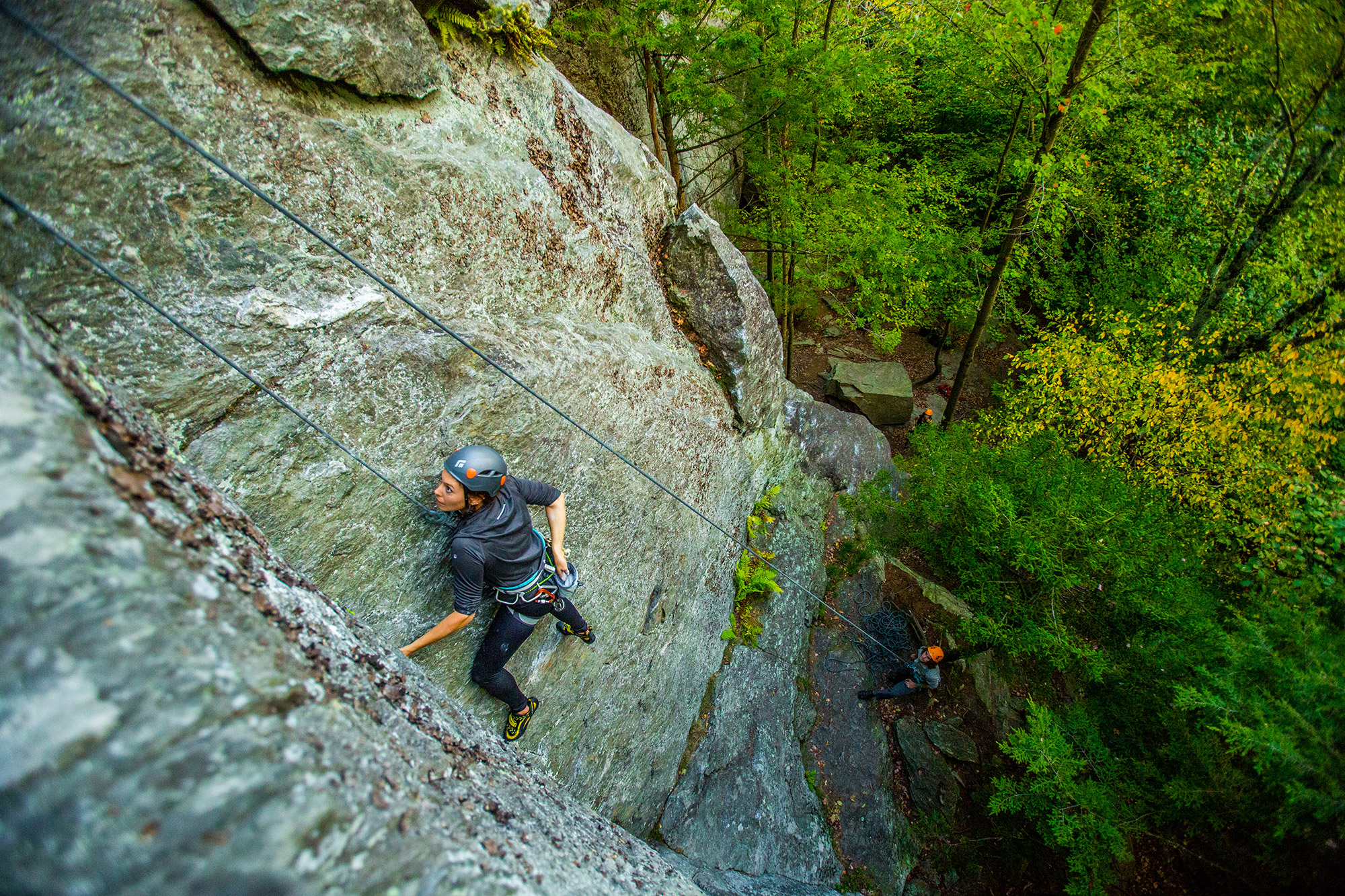
Diameter and Weight
Rope diameters range from less than 8mm to more than 10.5mm. Traditionally, single ropes are wider (9.0 to 10.5mm) than twin and half ropes (7.8 to 9.0mm). In general, thicker ropes are heavier and more durable, and skinnier ones are lighter and less durable. For this reason, thicker ropes are typically used for activities like top roping, and skinnier ropes are better for sport climbing. Climbers looking for one rope to do it all will be happy with a rope ranging from mid-9mm to low-10mm, as they offer a good blend of performance and robustness.
Because the way rope manufacturers measure the diameter isn’t standard—for example, some are measured under slight tension—the rope’s weight can help paint a clearer picture of its intended use. Heavier ropes tend to be built for longevity, while lighter ones are constructed with performance in mind.
Length
Ropes today come in a wide range of sizes. You’ve got gym-friendly 35-meter lengths to pitch-stretching 80-meter monsters. As a general matter, 60 meters is the most common, and will work at the majority of crags for everything from top-roping to ice climbing. That said, due to the recent trend of developers putting up longer sport routes and rope weights falling dramatically over the last 15 years, 70 is quickly becoming the new 60. A good recommendation is, be familiar with standard pitch lengths at your crag and purchase accordingly.
As leading in the gym has grown in popularity, ropes shorter than 60 meters have, too. They offer a more affordable (and more transportable) option, but if you take these ropes outside, be extra cautious and confirm the rope will be long enough for the route. Don’t be the fool who lowers your climbing partner off the end of a too-short rope!
GO: Under 50 meters | 50 meters | 60 meters | 70 meters
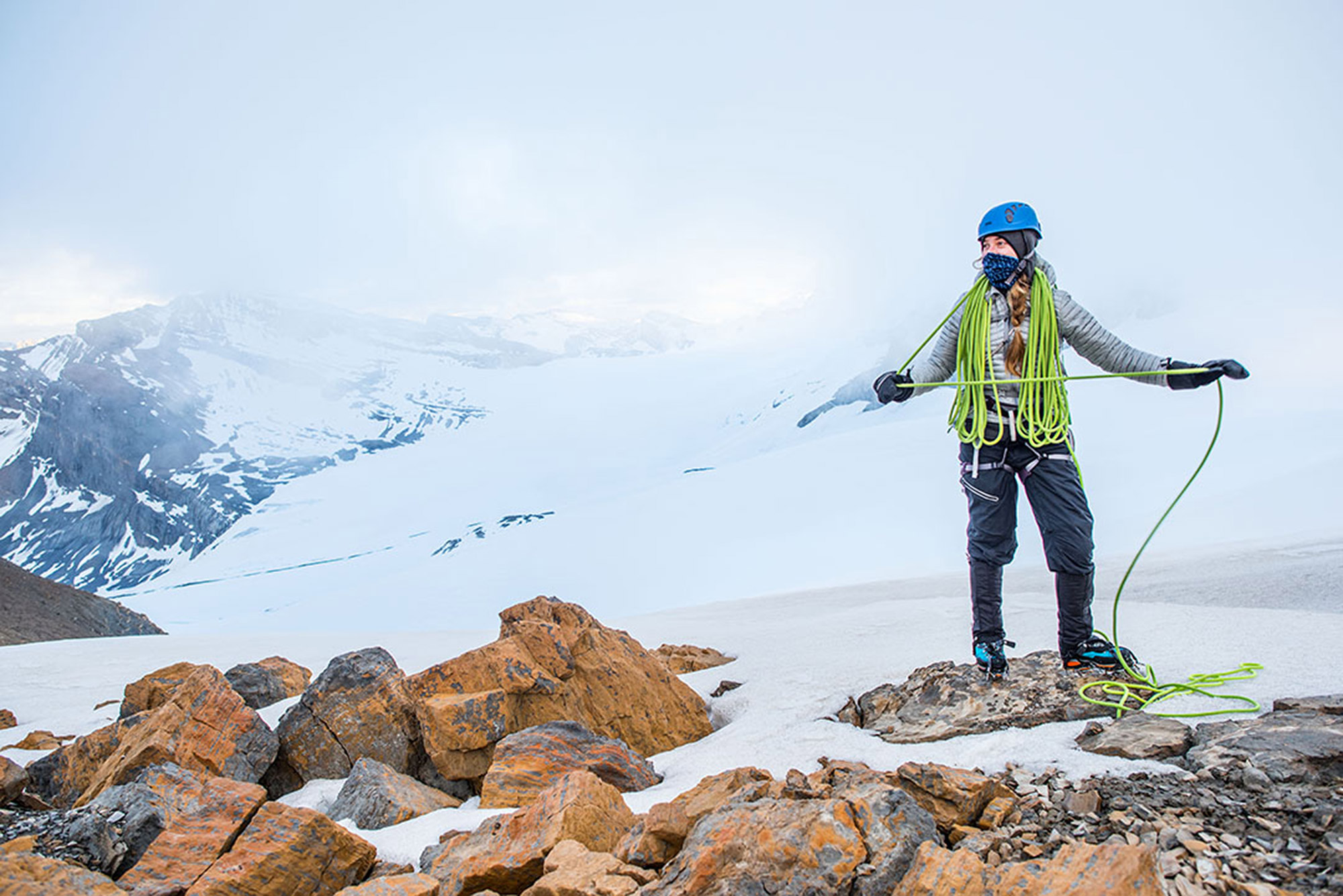
Dry Treatment
Ropes lose a considerable amount of their strength when wet. Furthermore, a wet rope weighs significantly more than a dry one. Because of this, most ropes come with the option of a dry treatment. More expensive than their non-treated counterparts, dry-treated ropes are favored by ice climbers and mountaineers for obvious reasons. But, dry-treated ropes offer a host of advantages for most climbers. Particularly, a dry treatment decreases rope drag and helps ropes run smoother through gear. More importantly, the same treatment that keeps your rope from absorbing water also helps to keep dirt out of your rope, thus extending its lifespan.
Dry ropes come in three forms: ropes with dry-treated sheaths, ropes with dry-treated cores, and ropes with dry-treated sheaths and cores. Treating the sheath (i.e., the rope’s outer shell) helps repel water, reduces the rope’s friction on the rock (thereby reducing abrasion), and gives the rope a nice slick feel and handle. For the core, dry-treating reduces the amount of water a rope will absorb and also reduces the likelihood of dirt and grime working its way into the core, the rope’s most important part. Dry-treating both the sheath and core combines the two treatments and offers the most water protection. However, it is also the most expensive and perhaps best reserved for ice climbing, mountaineering, and other climbing done in wet conditions.
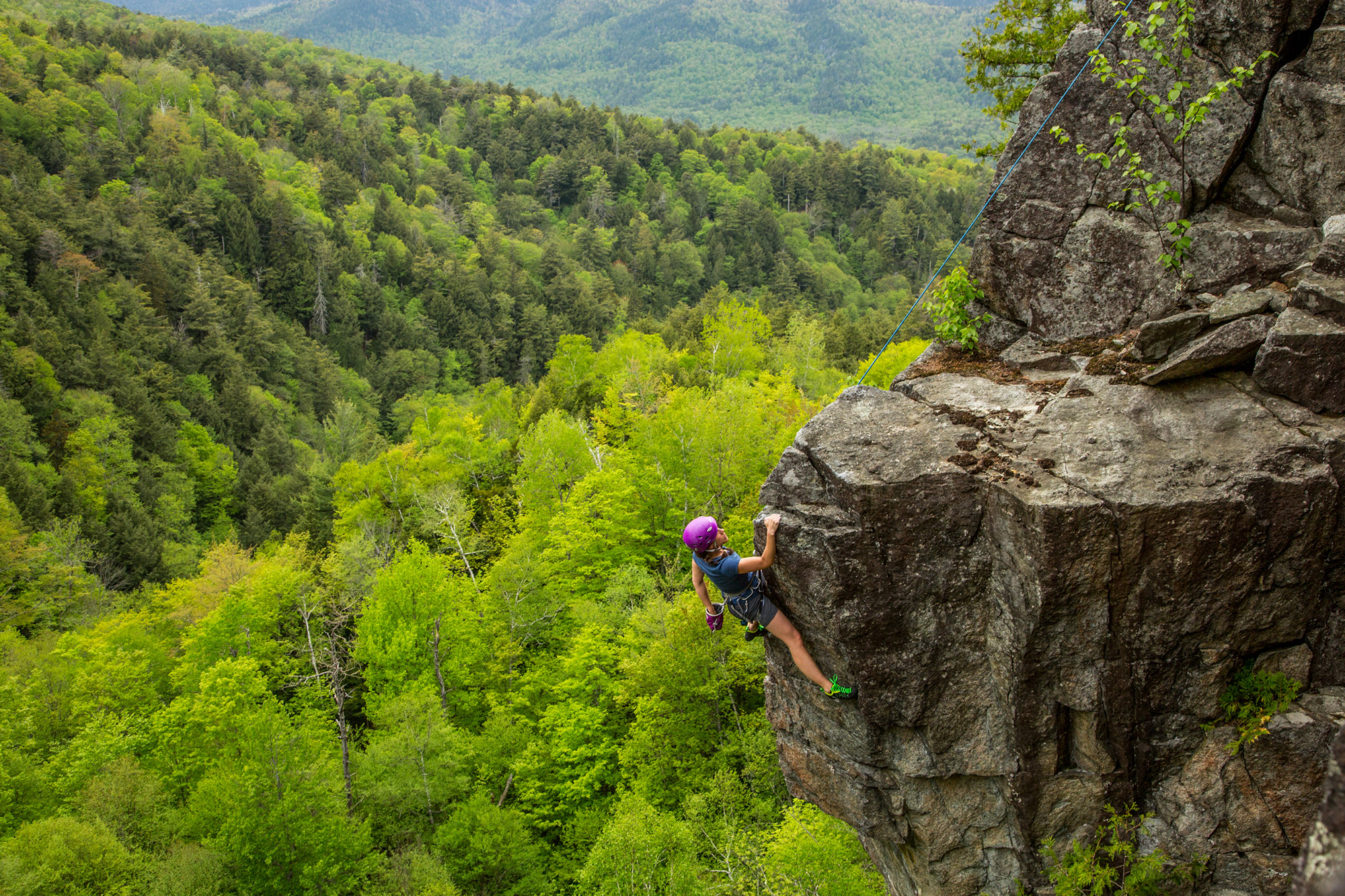
Middle Marker
Middle markers aid in a wide variety of ways, such as indicating it’s safe to lower a climber to ease in threading rappels. Most ropes today feature some kind middle-mark indicator—with features such as changing patterns, a distinctive mark, or a special weave to highlight a rope’s midpoint. Bi-color ropes offer the clearest indication, but also tend to be the most expensive. Ropes with colored middles offer a cost-effective solution, but the color can fade with use, and the middle mark can be difficult to see in fading light.
UIAA Fall Rating
The United International Climbing and Mountaineering Federation (UIAA) tests climbing ropes to see how many falls they can hold before failing. For single ropes, the test involves dropping an 80kg weight on the rope. With twin ropes, 80kg is used for both ropes. For half ropes, a 55kg weight is dropped onto a single strand. Single and half ropes must withstand a minimum of five falls, and twin ropes 12. Any rope that meets the UIAA fall standard is considered safe for climbing.
As a note, the lab tests subject ropes to more force than they’ll likely encounter in a real-world scenario. More so, the outdoors subjects ropes to hazards like sharp edges and worn fixed draws. So, get in the habit of inspecting your rope, especially if you’ve taken a big whipper.
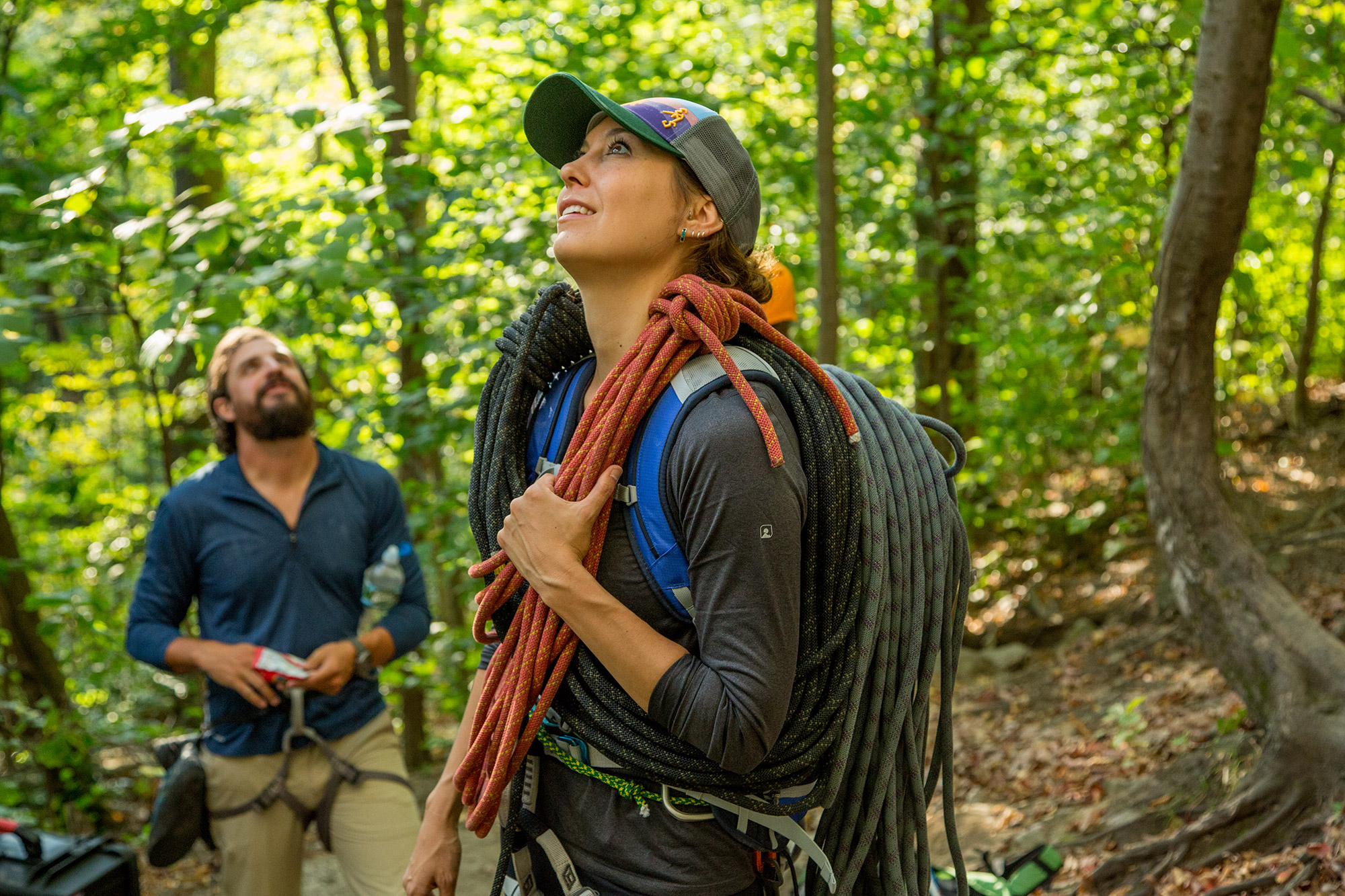
So, Which Rope Should I Get?
Although most ropes are pretty versatile, here’s a quick breakdown by activity:
Multi-pitch ice climbing: You want a rope that is long, skinny, and dry treated. Consider half and twin ropes—or, even better, ropes that rate as single, twin, and half—if your ideal routes involve long approaches and rappels, or if you’ll often be climbing as a party of three.
Top-rope cragging: Pack a beefy, durable single rope in the low-10mm range.
Sport climbing: For clipping bolts, a 60- or 70-meter single rope of medium diameter (9.4-9.8mm) is ideal.
For multi-pitch rock climbing: Bring a 60- or 70-meter rope of medium diameter (9.4-9.8mm). As with ice climbing, consider half and twin ropes—or ropes that rate as single, twin, and half—if your ideal routes involve long approaches and rappels, or if you’ll often be climbing as a party of three.
Tim Peck and Doug Martland
Tim and Doug met long ago at the Eastern Mountain Sports in Canton, Massachusetts. Bonding over a love of slick Quincy Quarry granite, White Mountain sufferfests, and scheming up adventures while folding tee-shirts, today Tim and Doug collaborate to write about their favorite outdoor activities and occasionally get nostalgic about tee-shirt tables.
Related Posts
May 3, 2024
Book Review: A Light Through the Cracks by Beth Rodden
A new memoir from a pioneering woman…




